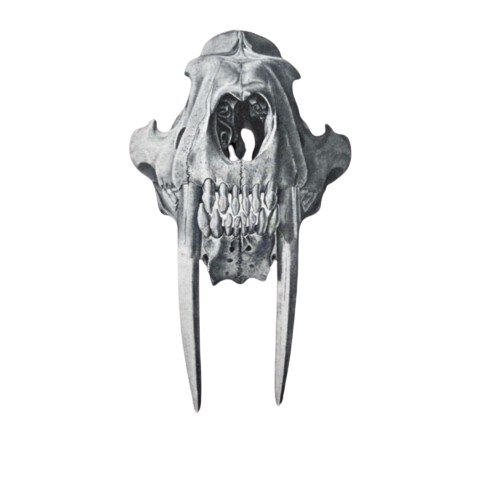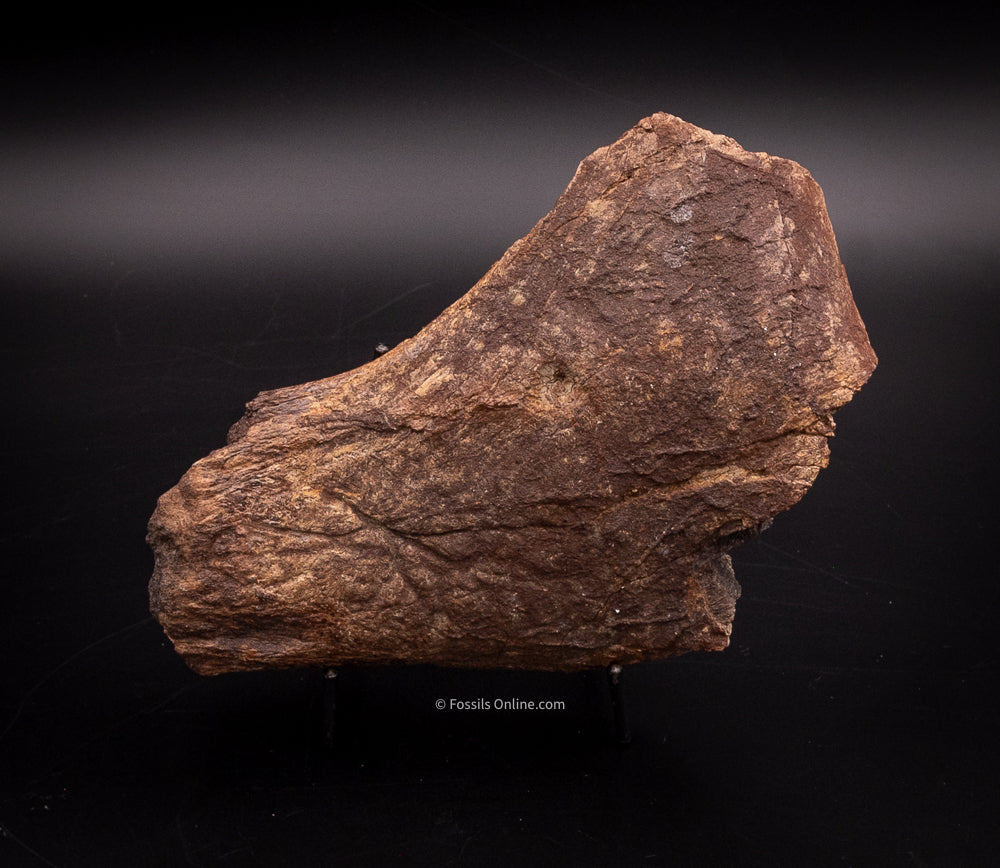
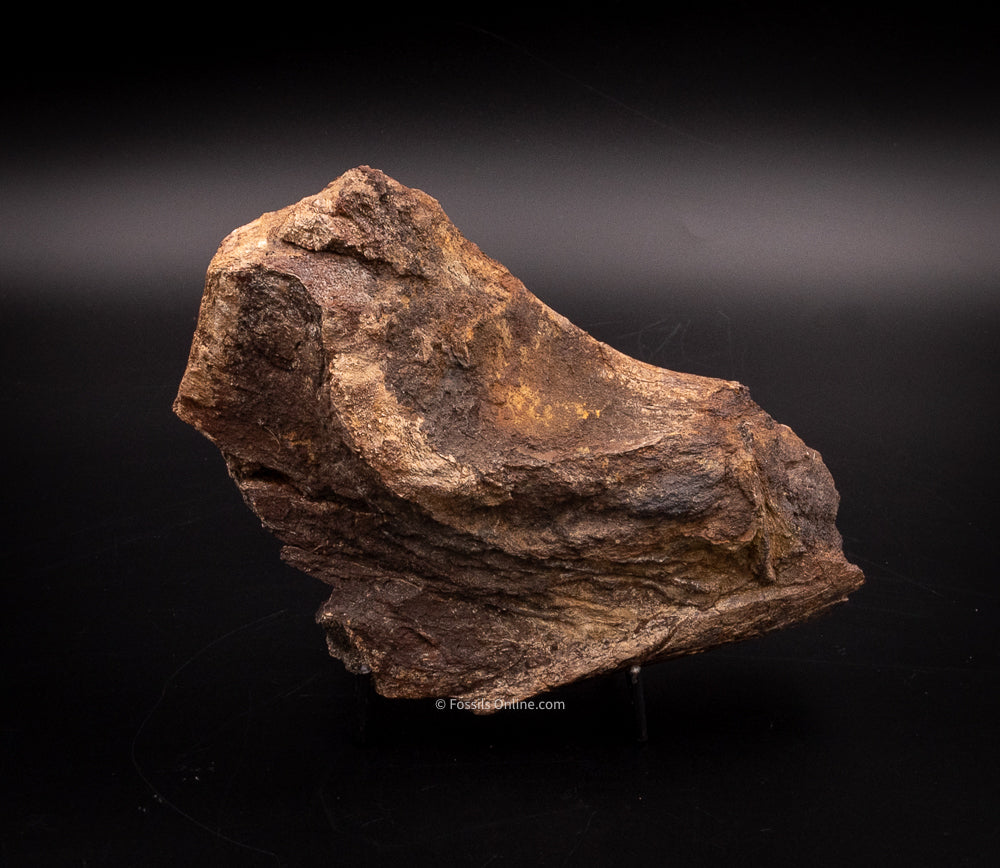
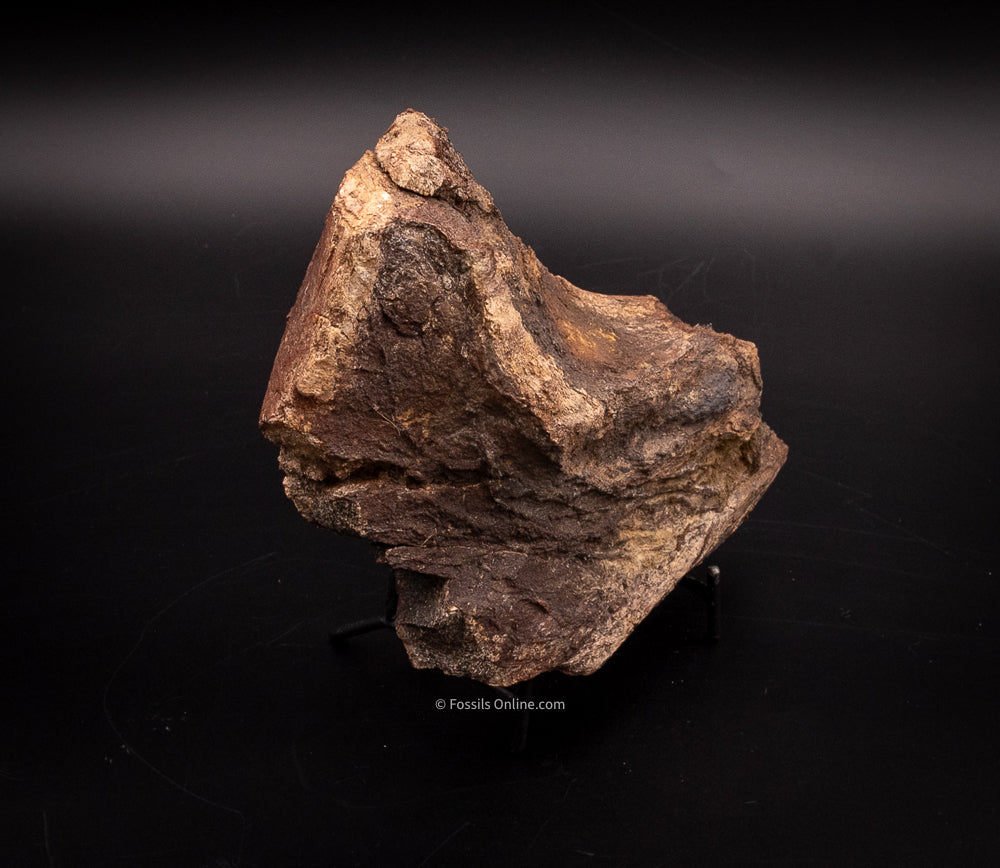
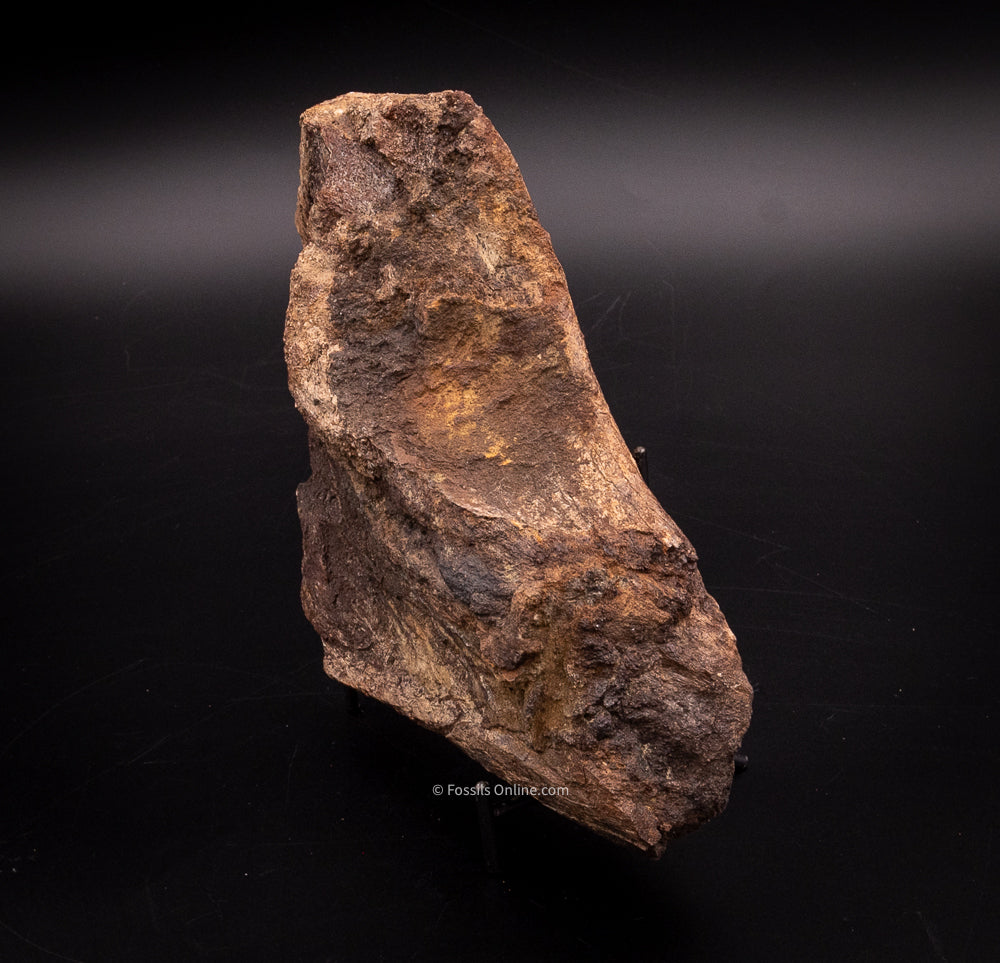
Triceratops Jaw Hell Creek Formation Dinosaur
Triceratops jaw from the Hell Creek Formation. This is a portion of the rear part of the right lower jaw. Unfortunately, there are no teeth present. They would have been just forward of where the jaw broke.
Triceratops, one of the most recognizable dinosaurs, was a large herbivorous ceratopsid that lived during the Late Cretaceous period, about 68 to 66 million years ago. Its name, derived from the Greek words "tri" (three), "keras" (horn), and "ops" (face), refers to its three distinctive facial horns - two above the eyes and one on the nose.
Triceratops is famous for its large skull, which could grow to over 7 feet in length, making it one of the largest skull of any land animal. The skull featured a prominent frill at the back, which might have been used for defense, display, or temperature regulation. This dinosaur's body was robust with a strong, bulky build, supported by four sturdy legs. It is estimated to have been up to 30 feet in length and could weigh anywhere between 6 to 12 tons.
Triceratops likely used its beak-like mouth and powerful jaws lined with rows of shearing teeth to clip and chew tough, fibrous plants. Its teeth were continually replaced throughout its life, well-suited for its herbivorous diet.
Fossils of Triceratops are abundant, indicating that it was one of the most common dinosaurs in its ecosystem. It lived alongside and possibly in competition with Tyrannosaurus rex. The presence of healed Tyrannosaurus bite marks on some Triceratops fossils suggests that these two might have had predator-prey interactions.
Triceratops remains one of the most popular and studied dinosaurs, symbolizing the diverse and complex world of the late Cretaceous period.
AGE
Cretaceous
LOCATION
Garfield County, MT
FORMATION
Hell Creek
Size
Measures 6.25” x 8".
Choose options




